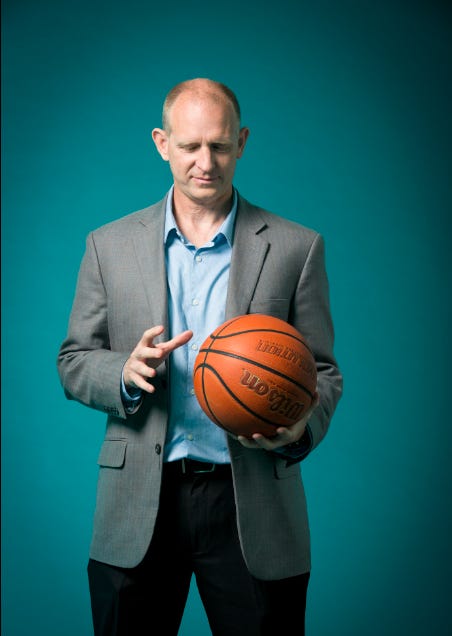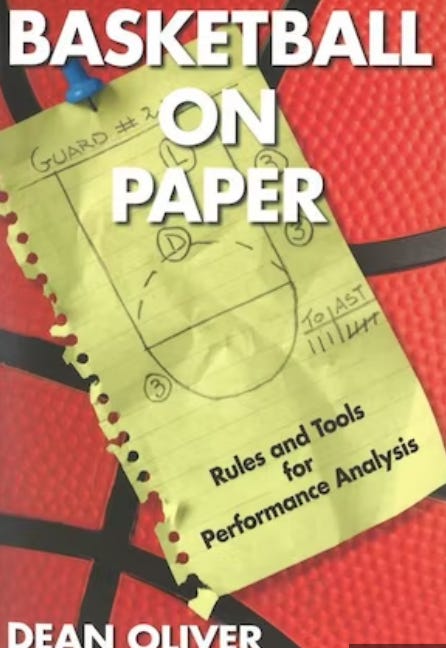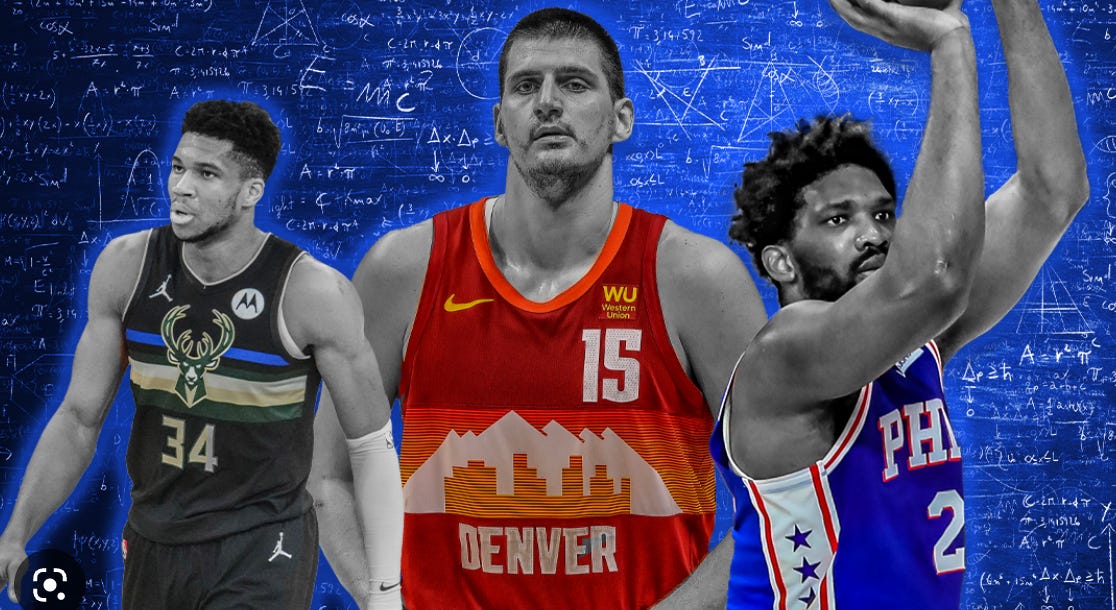Basketball is a game of numbers, and few people have done more to unlock the secrets behind those numbers than Dean Oliver.
Dean Oliver is a basketball statistician who has significantly impacted the development of statistics in sports. He is best known for his "Four Factors" model, which has become a widely used tool for evaluating basketball teams and players.
Born in Cedar Rapids, Iowa, Oliver grew up in a small town. Both of his parents were teachers, and his father was also the local high school basketball coach, which helped spark Oliver's interest in the sport. Like many American kids, he aspired to play in the NBA one day. Unfortunately, due to a rare infection as a child, Oliver became blind in his left eye by age 10. Remarkably Oliver still had a successful high school basketball career and thrived in the classroom. Oliver moved on to study engineering and play basketball at CalTech. During his collegiate career, he did not see not much floor time. He watched and learned about building offences and defences from then-coach Gene Victor. Oliver switched over his uniform for a clipboard and worked as an assistant coach throughout his junior and senior years.
Basketball was Oliver's passion. "I thought about basketball all the time," he said. This passion drove him to turn down MIT, Stanford, and Harvard for his post-graduate education. Instead, he went to the University of North Carolina, which had a great basketball team and environmental engineering program. There he served as a scout for the perennial basketball superpower, analyzing rival teams like Duke and Wake Forest.
Oliver's interest in basketball statistics began when he was a student at Caltech. While studying for his degree in engineering, he began analyzing basketball data and developing statistical models to evaluate player performance. He attributes his knowledge not only to his basketball experiences but also to his CalTech peers. “My friends at Tech weren’t all sports fans, but they appreciated the science behind what I was doing. Being able to talk basketball to scientists and science to basketball people helped build the language of sports analytics,” said Oliver.
After graduating, Oliver worked as an environmental consultant to pay the bills, as there was no market at the time for basketball analytics. However, he continued developing his ideas for using statistics in basketball.
In 2004, Oliver took time off work to publish his book "Basketball on Paper: Rules and Tools for Performance Analysis," which introduced his "Four Factors" model. The model considers four key statistics: shooting percentage, turnover percentage, rebound percentage, and free-throw rate. The model provides a detailed assessment of a team's overall effectiveness and efficiency by evaluating these statistics.
One of the key advantages of the "Four Factors" model is its simplicity. While many different statistics can be used to evaluate basketball performance, Oliver's model focuses on just four factors, making it easy to understand and use. This has helped to make it a widely adopted tool in basketball analytics.
Another unique aspect of Oliver's work is his focus on the practical applications of statistical analysis in basketball. Rather than simply analyzing data for its own sake, he has worked to develop tools and methods that coaches and players can use to improve their performance on the court. This practical approach has helped to make basketball analytics more accessible and relevant to the sport as a whole.
After publishing his groundbreaking "Four Factor" model, Oliver quit his consulting job and was hired by the Sacramento Kings. Since then, he has worked with ESPN to develop their analytics department, been to the conference finals with the Denver Nuggets, and has worked with Hall of Famers Magic Johnson and Chris Mullin.
Oliver's contributions to the development of statistics in sports have significantly impacted how basketball is played and evaluated. Today every NBA team has an analytics department. His work has promoted statistical analysis in basketball and deepened everyone's comprehension of the game at all levels. The "Four Factors" model is used by coaches, analysts, and fans alike, and Oliver's legacy in the world of sports analytics has been cemented.




